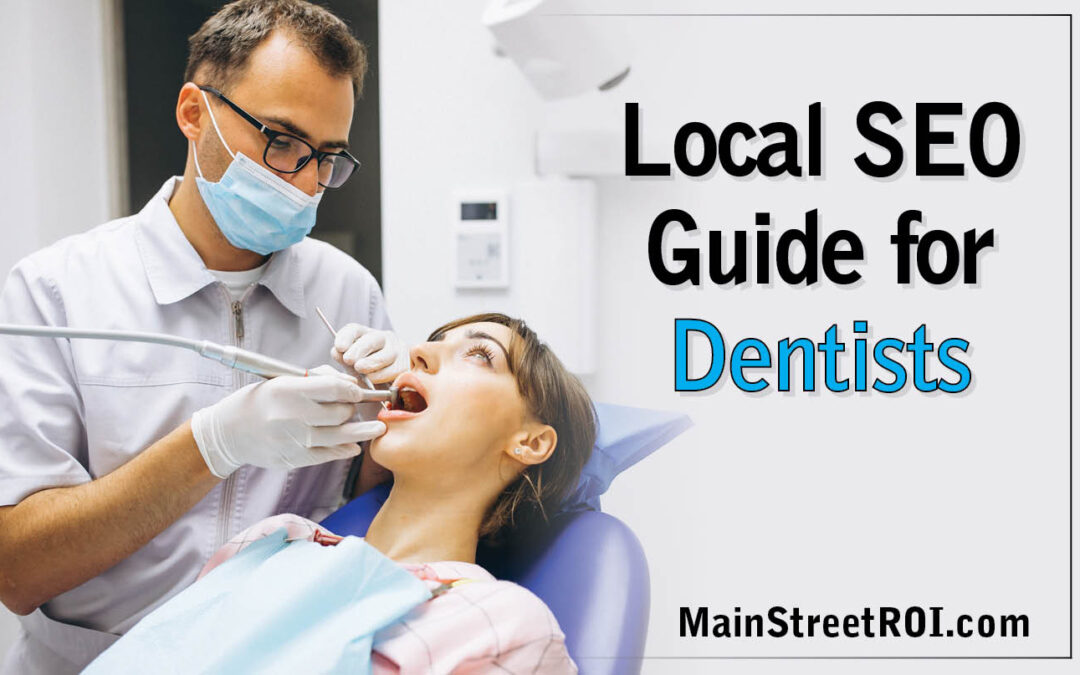Are you an orthodontist looking to boost your online presence and attract more local patients? Look no further than Ortho Advertising, your go-to SEO agency specializing in helping orthodontists dominate the local search results. With their expert knowledge and innovative techniques, Ortho Advertising can ensure that your practice appears at the top of search engine rankings, making it easier for potential patients to find and choose you. Specifically targeting dentists and orthodontists in need of SEO services, Ortho Advertising, based in Philadelphia, is the key to mastering local SEO and growing your orthodontic practice.
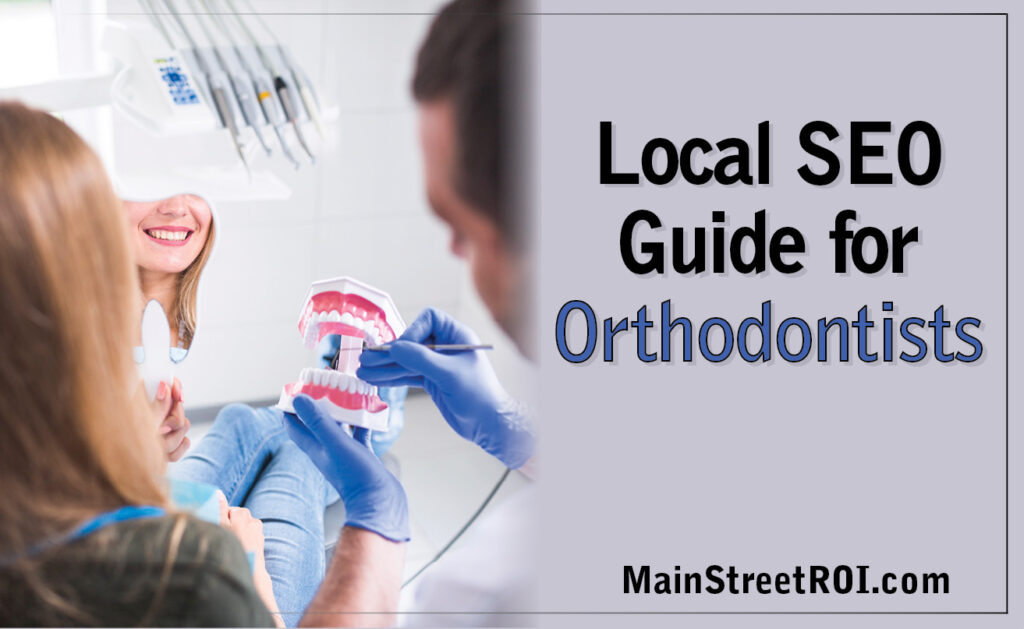
Understanding Local SEO
What is Local SEO?
Local SEO refers to the process of optimizing a website and online presence to improve visibility in local search results. It involves implementing strategies that help orthodontists to reach their target audience within a specific geographical area. Local SEO is crucial for businesses like orthodontists because it enables them to connect with potential patients who are actively searching for their services in their local area.
Why is Local SEO important for orthodontists?
Local SEO is essential for orthodontists because it helps them improve their online visibility, increase website traffic, and attract more local patients. When someone is searching for an orthodontist in their area, they are more likely to choose the one that appears on the first page of search results. By implementing effective Local SEO strategies, orthodontists can rank higher in local search results and stand out among their competitors.
Benefits of Local SEO for orthodontists
There are several benefits of implementing Local SEO strategies for orthodontists:
- Increased visibility: Local SEO helps orthodontists appear in the top search results when someone searches for orthodontic services in their local area. This increases their visibility and makes it easier for potential patients to find them.
- Targeted traffic: Local SEO helps orthodontists attract highly targeted traffic to their website. As they optimize their online presence for local searches, they can reach potential patients who are specifically looking for orthodontic services in their area.
- Improved online reputation: Through Local SEO, orthodontists can actively manage and respond to online reviews, ensuring they maintain a positive online reputation. Positive reviews can help attract more patients.
- Better conversion rates: When orthodontists optimize their website and landing pages for local searches, they create a better user experience for potential patients. This can lead to higher conversion rates and more appointments booked.
- Competitive advantage: By implementing effective Local SEO strategies, orthodontists can gain a competitive advantage over other practices in their area. They can outrank their competitors in local search results, attracting more patients and growing their practice.
Keyword Research
Identifying relevant keywords for orthodontists
To optimize their website for local searches, orthodontists need to identify relevant keywords that their target audience is using when searching for their services. These keywords should include terms such as “orthodontist,” “braces,” “teeth alignment,” and specific location-based keywords like the city or neighborhood they serve. By understanding the most commonly searched keywords, orthodontists can align their content to match what potential patients are looking for.
Using keyword research tools
Orthodontists can utilize various keyword research tools to identify relevant keywords for their local SEO strategy. Tools like Google Keyword Planner, SEMrush, and Moz Keyword Explorer provide insights into search volumes, competition levels, and related keywords. These tools can help orthodontists discover valuable keywords that they may not have initially considered.
Long-tail keywords for local SEO
In addition to targeting broad keywords, orthodontists should also focus on long-tail keywords for their local SEO strategy. Long-tail keywords are more specific phrases that potential patients might use when searching for orthodontic services. For example, “affordable orthodontist in [city name]” or “invisible braces near me.” By including long-tail keywords in their content, orthodontists can attract highly targeted traffic and improve their chances of ranking higher in local search results.
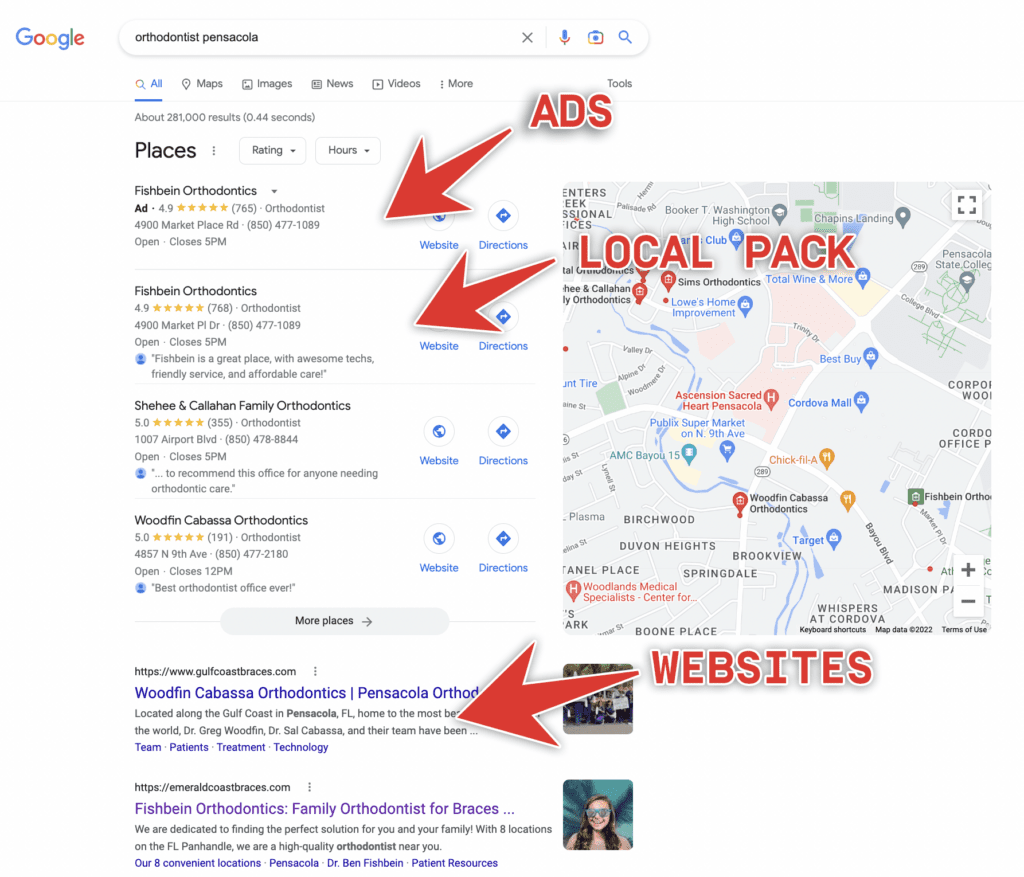
Optimizing Website and Landing Pages
Creating location-specific landing pages
One of the key strategies for local SEO is creating location-specific landing pages on the orthodontist’s website. These pages should target specific cities or neighborhoods that the orthodontist serves. By creating dedicated pages for each location, orthodontists can optimize their content to accurately reflect the services and expertise they offer within that area. This can improve their chances of appearing in local search results when someone searches for orthodontic services in that specific location.
Including keywords in meta tags
Meta tags, such as title tags and meta descriptions, play a crucial role in local SEO. Orthodontists should include relevant keywords in their meta tags to help search engines understand the content of their pages and improve their chances of ranking higher in local search results. The title tag should contain the orthodontist’s name, the targeted location, and a relevant keyword, while the meta description should provide a concise summary of what the page is about.
Optimizing page load speed
Page load speed is an essential factor in user experience and search engine rankings. Orthodontists should ensure that their website and landing pages load quickly to provide a smooth browsing experience for potential patients. They can optimize page load speed by compressing images, minifying code, and leveraging browser caching. Improved page load speed not only boosts the user experience but also enhances the website’s chances of ranking higher in search engine results pages.
Mobile optimization for local SEO
With the majority of online searches now happening on mobile devices, it is crucial for orthodontists to optimize their website for mobile users. Responsive design ensures that the website is easily accessible and navigable on all devices, including smartphones and tablets. By providing a seamless mobile experience, orthodontists can cater to the needs of potential patients who are searching for orthodontic services on their mobile devices, ultimately boosting their local SEO efforts.
Adding NAP (Name, Address, Phone) information
Including NAP (Name, Address, Phone) information is essential for local SEO. Orthodontists should prominently display their practice’s name, address, and phone number on their website, preferably in the footer of every page. Consistency is key here, and orthodontists should ensure that their NAP information matches the information listed on other online directories and platforms. This consistency helps search engines verify and validate the practice’s location, increasing its chances of appearing in local search results.
Using schema markup
Implementing schema markup on the orthodontist’s website can provide search engines with specific information about the practice, such as its address, phone number, and operating hours. By using schema markup, orthodontists can help search engines display this information in search results, enhancing the visibility of their practice to potential patients. Schema markup also enables orthodontists to appear in features like Google’s Knowledge Graph, which can significantly boost their local SEO efforts.
Google My Business (GMB)
Claiming and verifying your GMB listing
Claiming and verifying the orthodontist’s Google My Business (GMB) listing is a crucial step in local SEO. Orthodontists should claim their GMB listing and verify ownership to gain control over the information displayed in Google search results. This process typically involves requesting a verification code through mail or phone and entering it in the GMB dashboard.
Optimizing GMB profile for local searches
Once the GMB listing is claimed and verified, orthodontists should optimize their GMB profile for local searches. This includes providing accurate and up-to-date information about the practice, such as the name, address, phone number, website URL, and business hours. Orthodontists should also choose the relevant categories that best describe their practice, such as “orthodontist” or “braces provider,” to ensure their profile appears in the right local search results.
Adding accurate business information
In addition to optimizing their GMB profile, orthodontists should ensure that their business information is accurate and consistent across all online directories and platforms. This includes local directories like Yelp, Yellow Pages, and Bing Places, as well as industry-specific directories that cater to orthodontists. Consistency in business information helps validate the orthodontist’s location and improves their visibility in local search results.
Managing and responding to reviews
Reviews play a significant role in the decision-making process of potential patients. Orthodontists should actively manage and respond to reviews on their GMB listing, as well as other review platforms like Yelp and Healthgrades. This shows potential patients that the orthodontist values their feedback and is committed to providing excellent service. Responding promptly and professionally to both positive and negative reviews can help build trust and generate positive word-of-mouth for the practice.
Using Google Posts
Google Posts is a feature within GMB that allows orthodontists to share updates, announcements, and special offers directly in Google search results. Orthodontists can leverage this feature to promote specific services, highlight patient success stories, provide educational content, or promote limited-time offers. By utilizing Google Posts, orthodontists can capture the attention of potential patients directly in search results, improving their local SEO visibility.
Utilizing GMB insights
GMB provides valuable insights and analytics about how potential patients find and engage with the orthodontist’s listing. Orthodontists should regularly review these insights to understand their audience, identify trends, and optimize their local SEO strategy. By analyzing data such as search queries, user actions, and phone calls, orthodontists can make informed decisions about their local SEO efforts and continuously improve their online presence.

Online Directories and Citations
Submitting to relevant online directories
Orthodontists should submit their practice’s information to relevant online directories to improve their local SEO presence. This includes local directories, dental directories, and professional associations that cater to the orthodontic industry. By listing their practice in these directories, orthodontists can increase their chances of appearing in local search results and attract potential patients who may be browsing these platforms for orthodontic services.
Ensuring consistent NAP information
Consistency in NAP (Name, Address, Phone) information is crucial for online directories and citations. Orthodontists should ensure that their practice’s NAP information is accurate and consistent across all directories and platforms. This consistency helps search engines verify the practice’s location and enhances its local SEO visibility. Regularly monitoring and updating NAP information on online directories can ensure that potential patients can find the practice easily and contact them for appointments.
Managing and updating citations
Orthodontists should actively manage their citations, which are mentions of their practice’s NAP information on various online platforms. This includes verifying that the information is accurate, monitoring for any inconsistencies or outdated listings, and updating them as needed. Managing and updating citations helps ensure that potential patients can access correct and relevant information about the practice, ultimately benefiting the orthodontist’s local SEO efforts.
Getting listed on orthodontist-specific directories
In addition to general online directories, orthodontists should consider getting listed on directories specific to the orthodontic industry. These directories cater specifically to individuals searching for orthodontic services and can provide valuable visibility to orthodontists within their target audience. Examples of orthodontist-specific directories include Orthodontist.info, OrthoCenter.net, and Orthodontist.com. Being listed in these directories can boost the orthodontist’s local SEO presence and attract more interested patients to their practice.
Local Link Building
Leveraging local partnerships and sponsorships
Orthodontists can leverage local partnerships and sponsorships to build valuable links to their website. This could involve partnering with local schools, sports teams, community events, or charitable organizations. By supporting these organizations and building relationships within the local community, orthodontists can gain opportunities to have their website linked from their partners’ websites. These local links can improve the orthodontist’s local SEO visibility and attract potential patients.
Guest blogging on local websites
Guest blogging on local websites is another effective way to build local links and establish authority in the community. Orthodontists can reach out to local bloggers or other dental professionals in their area to inquire about guest blogging opportunities. By providing valuable content and insights to these websites, orthodontists can earn backlinks to their own website, which can boost their local SEO efforts and attract more local patients.
Joining local business associations
Joining local business associations provides orthodontists with valuable networking opportunities and potential link-building possibilities. By actively participating in local business associations, orthodontists can build relationships with other local businesses, gain exposure within the community, and potentially earn links to their website. Orthodontists should consider joining associations such as the Chamber of Commerce or local dental associations to connect with other professionals and boost their local SEO presence.
Creating content that attracts local links
Creating high-quality and valuable content that specifically targets the local community can naturally attract local links. Orthodontists can create blog posts, videos, or infographics that address common orthodontic issues or provide tips for maintaining good oral health. By promoting this content locally and offering it as a resource to other websites, orthodontists can earn backlinks from local sources, improving their local SEO visibility and attracting more potential patients.
Monitoring and earning online reviews
Online reviews can also serve as a source of local links. Orthodontists should actively monitor and respond to online reviews on platforms such as Google, Yelp, and Healthgrades. Satisfied patients who leave positive reviews may mention the orthodontist’s practice by name, providing an opportunity for a backlink. By consistently delivering excellent service and encouraging satisfied patients to leave reviews, orthodontists can naturally earn local links that enhance their local SEO efforts.
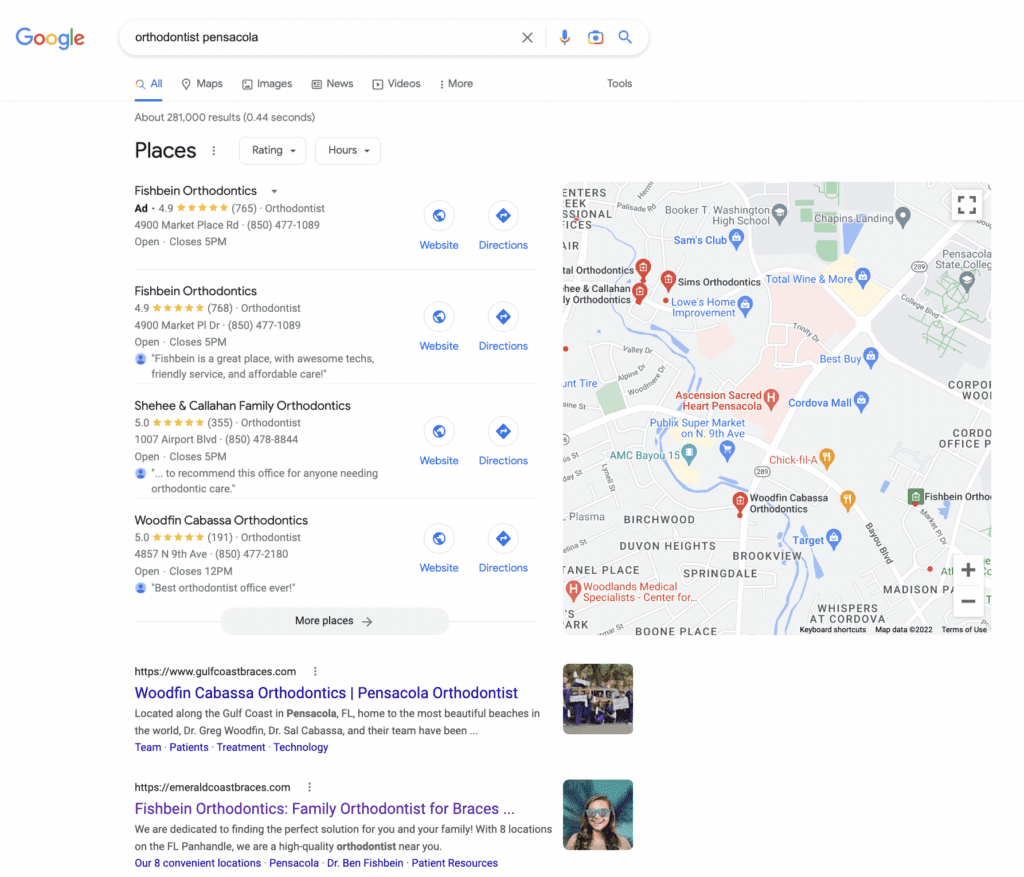
Social Media for Local SEO
Creating and optimizing social media profiles
Orthodontists should create and optimize their social media profiles on platforms where their target audience is active. This may include platforms such as Facebook, Instagram, Twitter, or LinkedIn. It is important to include accurate and up-to-date information about the practice, such as the NAP details, website URL, and a compelling description. By optimizing their social media profiles, orthodontists can increase their online visibility and drive more local traffic to their website.
Engaging with local audience on social platforms
To maximize the impact of social media on local SEO, orthodontists should actively engage with their local audience on these platforms. This involves responding to comments, messages, and inquiries from potential patients in a timely and friendly manner. By engaging with the local audience, orthodontists can build trust, establish themselves as experts in their field, and generate word-of-mouth referrals within the community.
Sharing relevant content and updates
Orthodontists should regularly share relevant content and updates on their social media platforms to keep their local audience engaged. This content can include oral hygiene tips, success stories, before-and-after photos, educational videos, or promotions. By consistently providing valuable content, orthodontists can position themselves as a reliable source of information and attract more local followers, ultimately boosting their local SEO efforts.
Running local targeting ads
Social media platforms provide the option to run targeted ads to a specific audience, including a local audience. Orthodontists can leverage this feature to run ads that specifically target individuals within their local area who are interested in orthodontic services. By running local targeting ads, orthodontists can increase their visibility among potential patients in their target location and attract more local traffic to their website.
Utilizing local hashtags
Using local hashtags in social media posts can help orthodontists connect with the local community and increase the discoverability of their content. Orthodontists should research popular local hashtags relevant to their area and include them in their posts. This can improve the visibility of their social media content among individuals who are searching for local information or using those hashtags, ultimately enhancing their local SEO efforts.
Online Reputation Management
Monitoring and responding to online reviews
Orthodontists should actively monitor and respond to online reviews to effectively manage their online reputation. This includes regularly checking platforms such as Google, Yelp, Healthgrades, and other review sites for new reviews. Responding promptly and professionally to both positive and negative reviews shows potential patients that the orthodontist cares about their feedback and is committed to providing exceptional service.
Addressing negative feedback
Negative feedback can happen to any orthodontist, but how they address it is crucial in mitigating any potential damage to their online reputation. Orthodontists should respond to negative reviews with empathy, understanding, and a willingness to resolve any issues. By engaging with dissatisfied patients and offering solutions, orthodontists can demonstrate their commitment to excellent patient care and potentially turn a negative experience into a positive one.
Building a positive online reputation
Orthodontists can build a positive online reputation by consistently delivering excellent service and encouraging satisfied patients to leave reviews. By exceeding patients’ expectations, orthodontists can generate positive word-of-mouth, which often leads to more online reviews and referrals. Building a positive online reputation helps orthodontists attract new patients and establish trust within the local community, ultimately boosting their local SEO efforts.
Encouraging satisfied patients to leave reviews
Orthodontists can proactively encourage their satisfied patients to leave reviews on platforms like Google, Yelp, and Healthgrades. This can be done through email follow-ups, personalized requests during appointments, or by displaying signage in the practice’s waiting area. By making it easy for patients to leave reviews and expressing gratitude for their feedback, orthodontists can increase the number of positive reviews, which in turn enhances their online reputation and local SEO visibility.
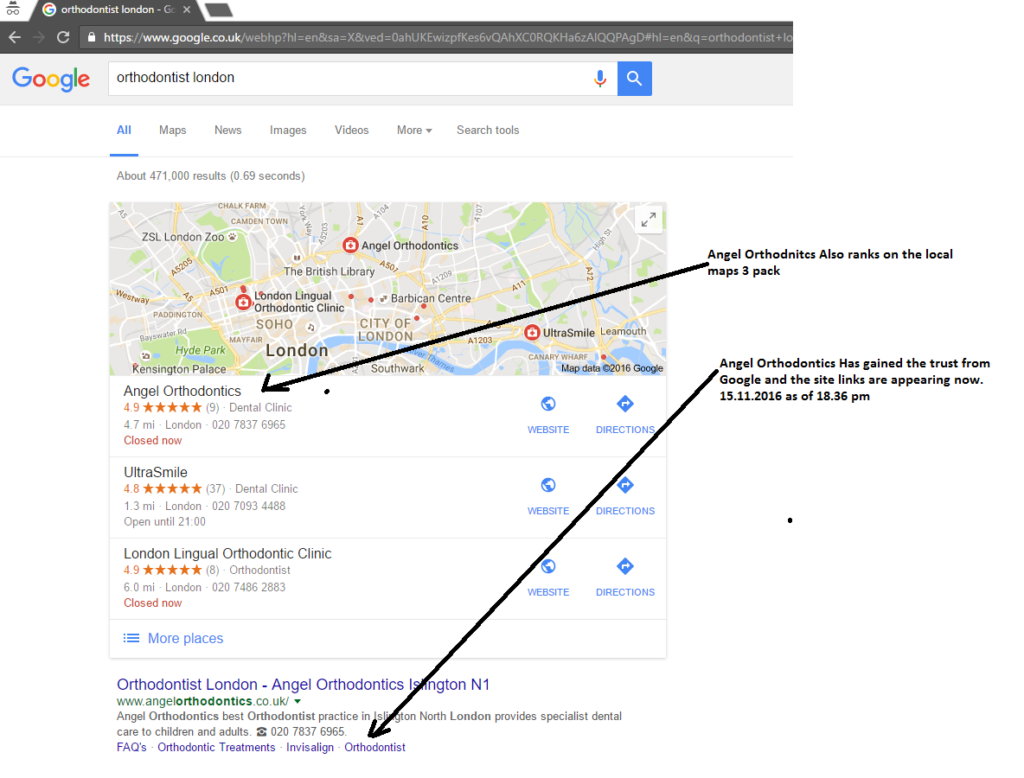
Tracking and Analytics
Setting up Google Analytics
Orthodontists should set up Google Analytics on their website to track and measure the performance of their local SEO efforts. Google Analytics provides valuable insights into website traffic, user behavior, and conversion rates. By properly installing and utilizing Google Analytics, orthodontists can gain a deeper understanding of how potential patients are finding and interacting with their website.
Tracking local SEO performance
Within Google Analytics, orthodontists can set up specific tracking goals and metrics to measure the performance of their local SEO efforts. This includes tracking organic search traffic, goal completions (such as appointment bookings or form submissions), and location-based metrics. By monitoring and analyzing these metrics, orthodontists can assess the effectiveness of their local SEO strategy and make data-driven decisions to improve their online visibility.
Analyzing website traffic and conversions
Orthodontists should regularly analyze website traffic and conversion data to gain insights into the effectiveness of their local SEO efforts. They can examine metrics such as the number of unique visitors, user engagement, bounce rate, and goal completion rates. By understanding how potential patients are navigating their website and interacting with their content, orthodontists can make improvements to further optimize their local SEO strategy and enhance user experience.
Monitoring keyword rankings
Orthodontists should monitor their keyword rankings to evaluate their local SEO performance. They can utilize tools like Google Search Console or third-party SEO software to track the rankings of their target keywords in local search results. By monitoring keyword rankings, orthodontists can identify trends, track progress, and make adjustments to their local SEO strategy as needed to improve their website’s visibility and attract more potential patients.
Utilizing tracking URLs
Tracking URLs can be used to measure the effectiveness of specific marketing campaigns or local SEO initiatives. Orthodontists can create unique tracking URLs for different sources, such as social media posts, email newsletters, or online advertisements, to track the traffic and conversions generated from each source. By appending tracking parameters to these URLs, orthodontists can identify which channels are driving the most local traffic and optimize their marketing efforts accordingly.
Staying Updated with Local SEO Trends
Following industry blogs and publications
Orthodontists should stay updated with the latest local SEO trends by following industry blogs and publications. Subscribing to reputable sources like Search Engine Journal, Moz, and Search Engine Land can provide orthodontists with insights, best practices, and emerging trends in the world of local SEO. By staying informed, orthodontists can adjust their strategies and remain competitive in their local market.
Attending local SEO conferences and webinars
Local SEO conferences and webinars offer opportunities for orthodontists to learn from industry experts, network with other professionals, and stay current with the latest local SEO trends. Orthodontists should consider attending conferences like Local Search Association’s LSA19 or MozCon Local to gain valuable knowledge, practical tips, and real-world insights into enhancing their local SEO efforts.
Participating in online forums and discussions
Engaging in online forums and discussions related to local SEO can provide orthodontists with a platform to ask questions, share experiences, and learn from others in the industry. Platforms like the Local Search Forum or Reddit’s /r/LocalSEO can be invaluable resources for orthodontists seeking advice, troubleshooting tips, or recommendations for local SEO strategies. Active participation in these communities allows orthodontists to stay in touch with the fast-changing landscape of local search and adapt their strategies accordingly.
Networking with other local businesses
Building relationships with other local businesses can provide orthodontists with insights into local SEO strategies that have worked for others in their community. Orthodontists can connect with complementary businesses, such as general dentists, pediatric dentists, or oral surgeons, to discuss best practices, share referrals, and potentially collaborate on local marketing initiatives. By networking and learning from other local professionals, orthodontists can enhance their local SEO efforts and foster mutually beneficial partnerships.
Considering professional SEO services like Ortho Advertising
While orthodontists can implement several local SEO strategies on their own, they may also consider outsourcing their SEO needs to a professional agency specializing in dental and orthodontic marketing, such as Ortho Advertising. Professional SEO services can provide orthodontists with in-depth expertise, comprehensive strategies, and ongoing support to ensure their local SEO efforts yield maximum results. By partnering with a dedicated SEO agency, orthodontists can focus on their core business while knowing that their local SEO needs are in capable hands.
In conclusion, mastering local SEO techniques is essential for orthodontists looking to improve their online visibility and attract more local patients. By understanding the importance of local SEO, conducting thorough keyword research, optimizing their website and landing pages, utilizing Google My Business, leveraging online directories and citations, implementing local link-building strategies, utilizing social media, managing online reputation, tracking performance, and staying updated with the latest trends, orthodontists can enhance their local SEO presence and succeed in their local market. Whether implementing strategies independently or seeking professional assistance, orthodontists can achieve significant growth and achieve their business goals with effective local SEO.

